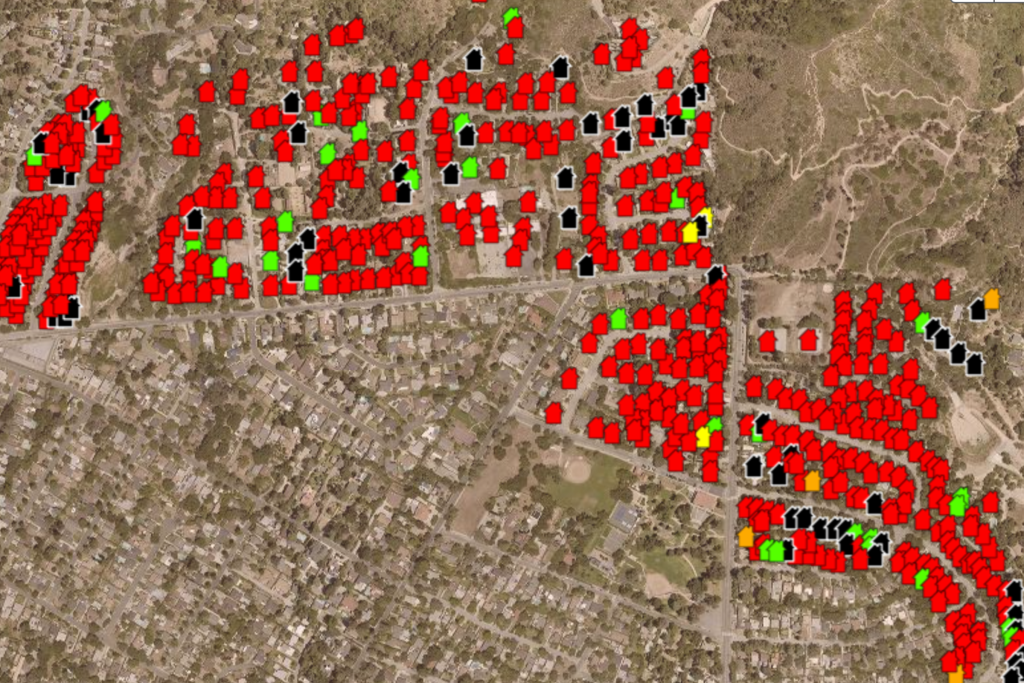The devastating wildfires raging across Los Angeles County, primarily the Palisades and Eaton fires, have left a trail of destruction visible from space, impacting thousands of lives and properties. Satellite imagery starkly reveals the scope of the damage, highlighting the fires’ relentless march through residential areas, consuming homes and leaving behind charred landscapes. The impact extends beyond immediate property loss, threatening generational wealth and displacing communities. This crisis underscores the growing vulnerability of California to increasingly frequent and intense wildfires, fueled by a combination of powerful Santa Ana winds and prolonged dry conditions exacerbated by climate change.
As the fires continue to burn, the human toll mounts. Over 1,400 structures in Altadena/Pasadena have been destroyed by the Eaton fire, and over 1,100 structures in the Pacific Palisades and Malibu have succumbed to the Palisades fire. These figures represent not just buildings, but homes, livelihoods, and memories. The fires have impacted both everyday citizens and high-profile figures, including celebrities who have lost their residences. For the historically Black community of Altadena, the destruction poses a significant threat to generational wealth built through homeownership, potentially reversing decades of progress.
The ongoing battle against these infernos presents immense challenges for firefighters. Containment efforts are hampered by persistent high winds and dry conditions, creating a volatile environment where the fires can spread rapidly and unpredictably. As of the latest reports, the Palisades fire is only 13% contained, having consumed over 23,000 acres. The Eaton fire, while at a higher containment level of 27%, continues to burn across nearly 14,000 acres. These figures highlight the scale of the ongoing threat and the immense effort required to bring these fires under control. The continued risk necessitates ongoing evacuation orders for large portions of the affected areas, leaving residents in a state of uncertainty and displacement.
The impact of these fires extends beyond immediate property damage. Large sections of Malibu and Altadena remain under mandatory evacuation orders, signifying the imminent threat to life and safety. While some residents have been permitted to return, many face the devastating reality of finding their homes reduced to ashes. Beyond the immediate danger of the flames, the fires have also disrupted essential services like water supply. Several areas are under boil water notices due to the potential contamination of water sources, adding another layer of complexity to the recovery process. These notices underscore the widespread disruption caused by the fires, impacting even basic necessities like access to clean drinking water.
The gravity of the situation has prompted responses from both state and national levels. California Governor Gavin Newsom has emphasized the urgency of damage assessments to expedite the rebuilding process. Recognizing the need to not just rebuild but also enhance resilience, Newsom’s directive aims to ensure that communities are better prepared for future fire threats. The outpouring of support extends beyond state lines, with Texas Governor Greg Abbott deploying firefighters and equipment to aid California’s efforts. This interstate collaboration underscores the shared responsibility in facing such large-scale disasters. These responses, while crucial for immediate relief and recovery, also highlight the need for long-term solutions to address the underlying factors contributing to the increasing frequency and intensity of wildfires.
Looking ahead, the path to recovery and rebuilding will be long and arduous. With the fires still not even halfway contained and unfavorable weather conditions persisting, the immediate focus remains on controlling the spread and protecting lives and property. The aftermath will necessitate a comprehensive approach encompassing not only rebuilding homes but also addressing the systemic issues that contribute to wildfire vulnerability. This includes implementing stricter building codes, improving forest management practices, and investing in early warning systems. Furthermore, the fires underscore the critical need to address the underlying drivers of climate change, which exacerbate these conditions. The challenge lies not only in recovering from the current devastation but also in building a more resilient future that mitigates the risks of such catastrophic events.










